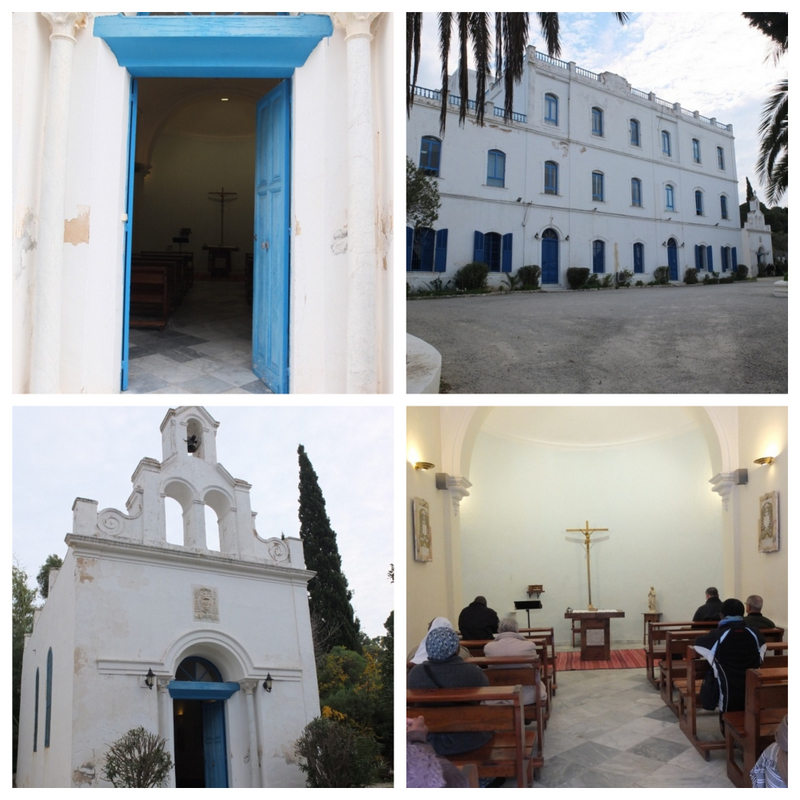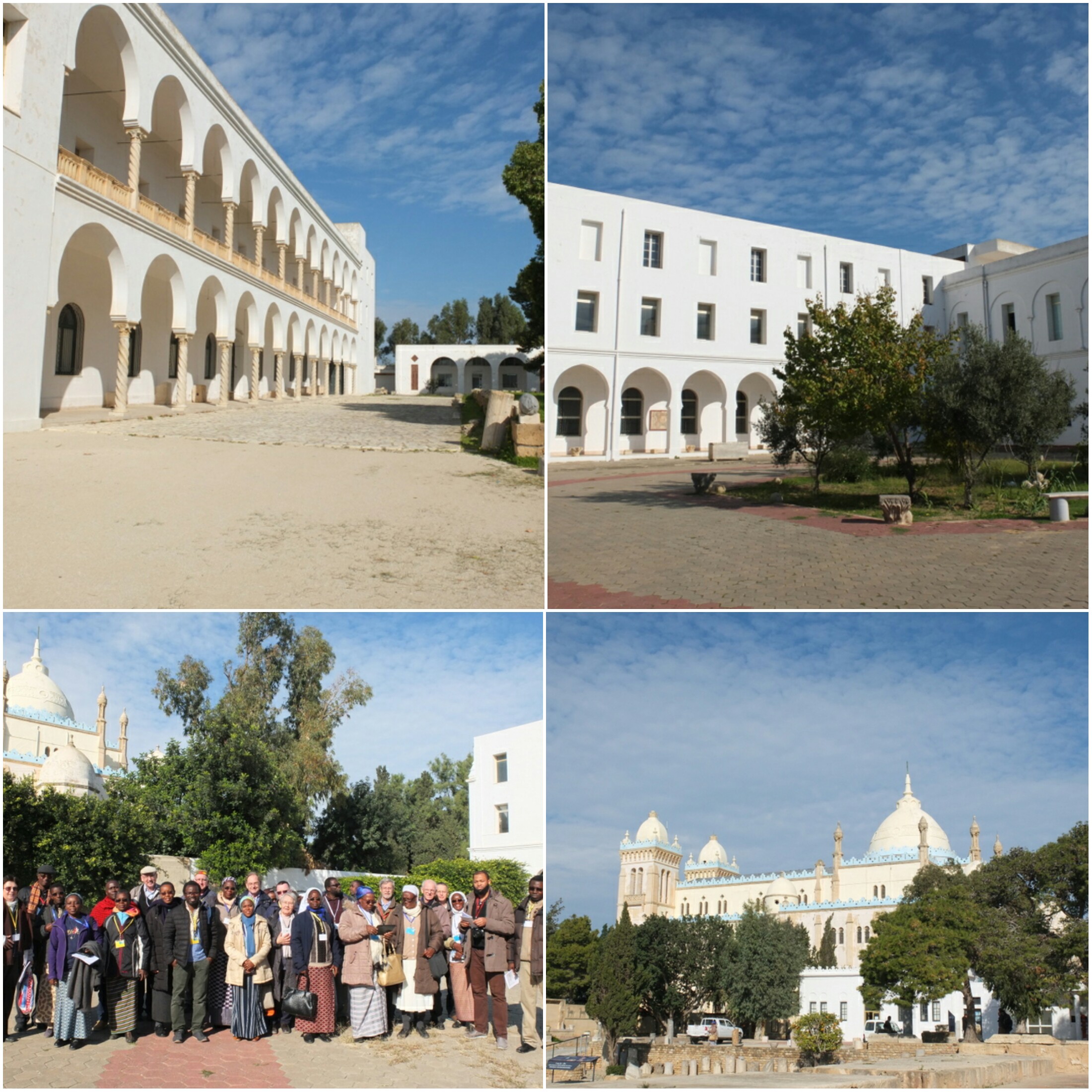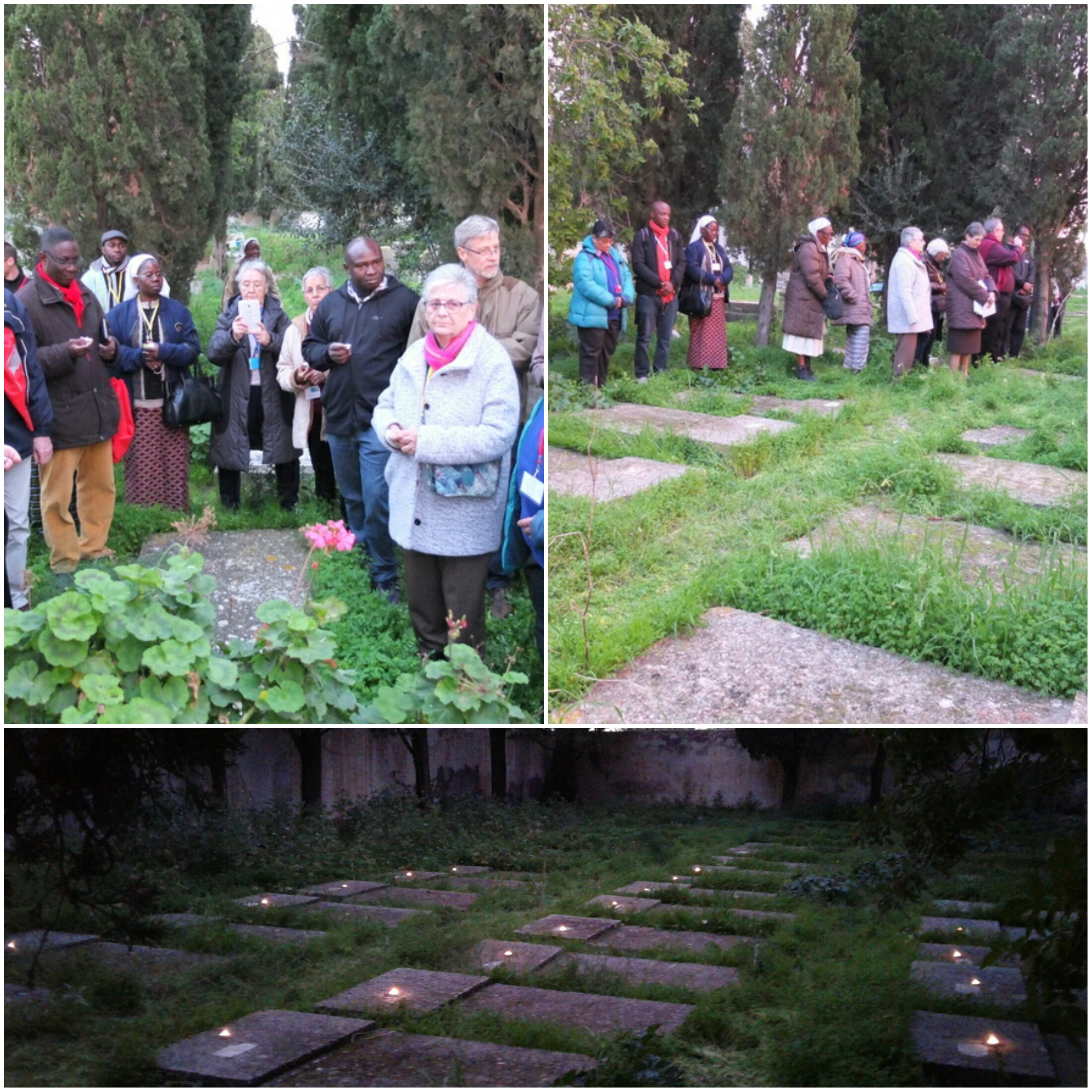The opening celebrations of the Jubilee Year began with a 3-day pilgrimage. The first item on the itinerary was both a discovery and a spiritual step in the footsteps of the ancient church of Africa, of Lavigerie and the White Fathers and White Sisters in Tunisia.
It was a day for an “open door.” The important places that are usually inaccessible today opened before us as if Cardinal Lavigerie said to us: “Enter my children and see!.”
The Lavigerie Chapel at la Marsa, his first residence in Tunisia and today, the parish of Saint Cyprien.
 The amphitheater of Carthage – the place of the martyrdom of Saints Perpetua and Felicity and their companions, where we prayed for all who are persecuted today.
The amphitheater of Carthage – the place of the martyrdom of Saints Perpetua and Felicity and their companions, where we prayed for all who are persecuted today.
 The Basilica of Saint Louis of Carthage built by Cardinal Lavigerie, the seminary of the White Fathers and the Lavigerie Museum.
The Basilica of Saint Louis of Carthage built by Cardinal Lavigerie, the seminary of the White Fathers and the Lavigerie Museum.
 The former school of the White Sisters where the doors of the old chapel were opened to us. “I am happy to finally begin this new work, and happy to begin it humbly. That is why I wanted to bless this chapel without any pomp, without even inviting the White Fathers who are nearby nor anyone else in the world, so that it is well understood that the work that will be done here will be the work of God and not that of humans.” Cardinal Lavigerie
The former school of the White Sisters where the doors of the old chapel were opened to us. “I am happy to finally begin this new work, and happy to begin it humbly. That is why I wanted to bless this chapel without any pomp, without even inviting the White Fathers who are nearby nor anyone else in the world, so that it is well understood that the work that will be done here will be the work of God and not that of humans.” Cardinal Lavigerie
 The house of the Franciscan Missionary Sisters of Mary who were called to Carthage by Cardinal Lavigerie in 1886–their house is now the university. We were delighted to be able to interact with the students.
The house of the Franciscan Missionary Sisters of Mary who were called to Carthage by Cardinal Lavigerie in 1886–their house is now the university. We were delighted to be able to interact with the students.
 The Damous el Karita basilica was one of the most important pilgrimage sites in all of North Africa and the Rotunda could be the tomb of St Cyprien.
The Damous el Karita basilica was one of the most important pilgrimage sites in all of North Africa and the Rotunda could be the tomb of St Cyprien.
 With thanksgiving and lighting lanterns on each grave, we remembered our ancestors, fathers and sisters buried in Carthage.
With thanksgiving and lighting lanterns on each grave, we remembered our ancestors, fathers and sisters buried in Carthage.

The time for sharing in groups according to colors.

The time for prayer.

The time for reunion








